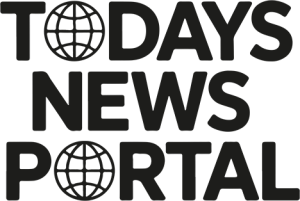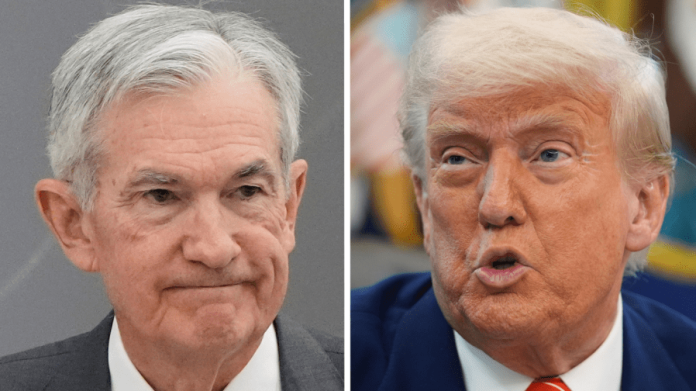
With inflation rising and hiring slowing, a dreaded word is back in the conversation: “stagflation.”
Widely seen as a nightmare economic scenario, it’s the rare double blow of rising prices and weak growth, squeezing consumers at the checkout line and in the job market.
“The whiff of stagflation is getting stronger,” Harvard economics professor Jason Furman wrote on the social media platform X Thursday. “There are no good options for the Fed given the set of circumstances we’re facing.”
Furman’s warning followed new Labor Department data showing consumer prices rose 2.9 percent in August from a year earlier, the fastest annual pace since January. At the same time, hiring has slowed sharply, and the unemployment rate — now 4.3 percent — is at its highest level in four years.
Those conditions have put Fed policymakers in a tough spot: ease interest rates to support the labor market or keep them higher for longer to bring inflation down to the 2 percent target.
It’s a version of the same dilemma that haunted monetary officials in the 1970s and early 1980s, when stagflation emerged, eventually driving both inflation and unemployment into double digits.
Today’s picture isn’t nearly as dire, and stagflation — if it comes back — could look different. Here’s what to know.
What is ‘stagflation’?
“Stagflation,” a mash-up of “stagnation” and “inflation,” describes the unusual situation where the economy stalls while the cost of living keeps surging.
It’s uncommon because it defies conventional economic logic: a slowing economy typically cools demand, which helps keep prices in check. Stagflation flips that script — costs rise even as growth sputters.
The term itself was coined in 1965 by British politician Iain Macleod, who described it as “the worst of both worlds.”
Roughly a decade later, Americans became familiar with the concept when inflation ran above 9 percent and unemployment hovered near that level in 1975. Several factors drove the spike, but a series of oil price shocks and loose monetary policy were key drivers, and the problem lingered for years.
Today’s 2.9 percent inflation and 4.3 percent unemployment look tame by comparison, but both are currently trending the wrong way, tying the Fed’s hands.
There’s no clear line for when stagflation starts, and it’s possible the U.S. could see a milder version that never reaches the extremes of the 1970s and early 1980s.
Why is stagflation a concern?
Stagflation hurts consumers by straining wallets when times are already tough, and it’s a headache for the Fed because it’s so hard to fight.
Policymakers have two main goals: maximum employment and stable prices, but stagflation pits them against each other.
Normally, the Fed hikes interest rates to tame inflation and cuts them to fight job losses, but when both problems flare at once, there’s no simple playbook.
In April, Fed Chair Jerome Powell warned that President Trump’s new tariffs were “significantly larger than expected” with likely effects that included “higher inflation and slower growth” — a recipe for stagflation.
Since then, inflation has ticked up, and the job market has softened, with the economy shedding positions in June for the first time in 4.5 years. Separate data released this week showed the labor market has been weaker than previously thought for some time, even before Trump took office.
The Fed is expected to cut rates at its meeting next week, a move to shore up jobs even though inflation is still running above its 2 percent goal.
“The harder question they’re going to start debating: How much conviction do they really have to keep cutting, as inflation inches further away from target?” Bankrate analyst Sarah Foster wrote in a note Thursday, warning of stagflation risks.
Why stagflation may look different this time
Stagflation could return, but that doesn’t mean it will be as severe — or last as long — as it did decades ago.
A recent Fidelity Viewpoints piece, “Stagflation: Not the 1970s,” argued that several of the forces behind the past crisis, such as oil supply shocks and union-driven wage inflation, aren’t in play today.
“We believe that while things aren’t perfect, they’re hardly bad, and the economy is still expanding,” Bradford Pineault of Fidelity’s Capital Markets Group said.
Inflation has risen since Trump’s April tariff announcements but so far not with the sharp spike many economists feared. In August, Powell suggested the effect of tariffs on inflation could be relatively short-lived, a view he called a “reasonable base case.”
Unemployment has crept up to 4.3 percent, and outside of health care, job seekers are having a hard time. But the 10 percent levels of the early 1980s are still a long way off.
The eventual result could be a kind of “stagflation-lite,” with inflation lingering above the Fed’s 2 percent target without spiking, while growth loses momentum. That’s hardly good news, but it’s better than the worst-case scenario.
“Full-blown stagflation is rare and likely to stay that way,” Chengjun Chris Wu, vice president and senior portfolio manager at Federated Hermes, wrote in an August blog post.

